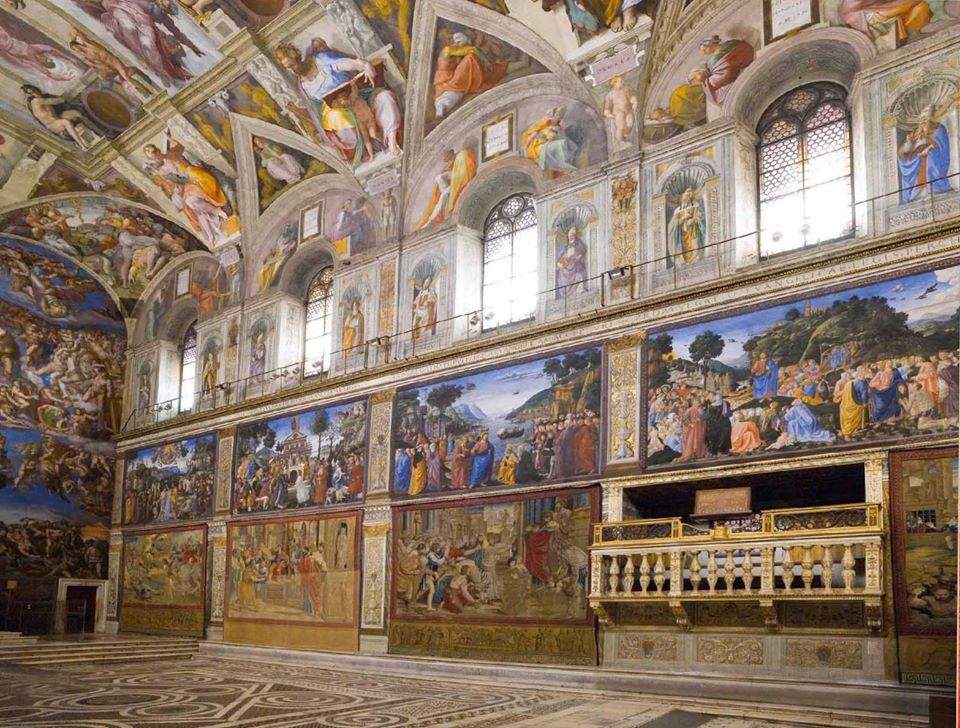From February 17 to 23, 2020, the Sistine Chapel will become the scene of a very rare event: the tapestries that Raphael designed for the room, commissioned by Pope Leo X, will in fact return to their place of origin. If we make an exception for the event of July 14, 2010, when for one night only a selection of tapestries (four, out of ten in total) were temporarily hung in the Chapel, the complete “reunion” has not happened since 1983: after thirty-seven years, therefore, the tapestries leave the place where they are usually kept (the Pinacoteca Vaticana, where they are displayed in rotation for conservation reasons) and return to the Sistine Chapel: and for seven days the public will see the world’s most famous chapel exactly as the great Urbino had imagined it.
This was announced by the director of the Vatican Museums, Barbara Jatta, in an interview with Il Messaggero: “an exciting show,” she called it. “They were last hung in 1983. We are working on a sophisticated lighting system, the same one we will apply to the new Room VIII dedicated to Raphael in the Pinacoteca. The new Sistine Chapel will be on view from Feb. 17 to 23, and this last day coincides with a Sunday with free admission, chosen with the desire to share this event with everyone, especially Romans.”
The tapestries, all or most of which measure five by four meters (it will take a day and a half to assemble them, the director pointed out), depict the Stories of Saints Peter and Paul from the Gospels and the Acts of the Apostles, and their execution dates from between 1515 and 1519. Designed by Raphael Sanzio (Urbino, 1483 - Rome, 1520) for Pope Leo X, born Giovanni de’ Medici, who wanted to leave his mark on the Sistine Chapel, they were woven in Brussels in the workshop of Pieter van Aelst, one of the most famous Renaissance tapestry makers. They are also important works because Raphael, with his tapestries, was comparing himself to Michelangelo in the same environment (the frescoes of the Sistine Chapel’s vault date from a few years earlier). The ten tapestries depict the Miraculous Fishing, the Delivery of the Keys, the Punishment of Elymas, the Sacrifice of Lystra, the Healing of the Cripple, the Preaching of Saint Paul, the Death of Ananias, the Stoning of Saint Stephen, the Conversion of Saul, and Saint Paul in Prison. The surviving original cartoons (seven in all) are in the Victoria and Albert Museum in London.
Pictured: the four tapestries hanging in the Sistine Chapel in the 2010 event.
 |
| Raphael's tapestries return to the Sistine Chapel: hasn't happened in 37 years. But it will only be for a week |
Warning: the translation into English of the original Italian article was created using automatic tools. We undertake to review all articles, but we do not guarantee the total absence of inaccuracies in the translation due to the program. You can find the original by clicking on the ITA button. If you find any mistake,please contact us.